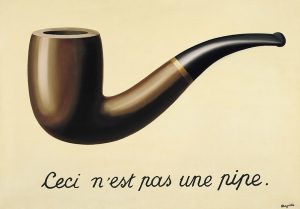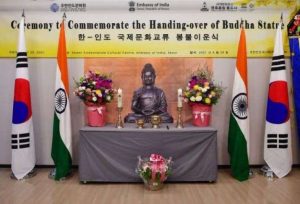
Despite being a young country that was born in 1971, Bangladesh has a rich history of Buddhism dating back to the historical Buddha (563–483 BCE). Over a long period, the region of Bangladesh established numerous Buddhist educational institutions, monasteries, and meditation centers for the benefit of Buddhist practitioners. Unainpūrā Sukhlāl Subedār Maṭha is one of those historical sites that was established around three centuries ago. It is located in the village of Unainpūra, in the sub-district of Patiya and district of Chattogram (also known as Chittagong) in Bangladesh.

I have written before that Unainpūrā is a “spiritual village.” It was the birthplace of numerous Buddhist scholars, monks, and spiritual leaders who have contributed to the spread of Theravāda Buddhism in Bangladesh and the Indian subcontinent over the past few hundred years.
According to the local histories and a famous white stone rock edict that records Unainpūrā Laṅkārāma’s history since the 1600s, sixteen prominent monks were born in Unainpūrā. Śrīmat Krenglah Mahāsthabir (1700–80) was one of those sixteen monks of Unainpūrā, and was respected by devotees and disciples for his rigorous meditation practice and Buddhist teachings.
The story goes that there was a lay Buddhist and an educated and wealthy person (danapati) called Mr. Sukhlāl Subedār. He served as a local governor (subedār) under Nawab Alivardi Khan (1671–1756). Nawab Alivardi Khan was a former ruler of the regions of Bengal (present-day Bangladesh and West Bengal of India), Bihar, and Orissa. Subedār had taken his job title as his surname. At some point, he came into contact with Śrīmat Krenglah Mahāsthabir and became his student.

Krenglah Mahāsthabir was not only a Buddhist monk; he was also an accomplished meditation practitioner. He was the former abbott of Unainpūrā Laṅkārāma. According to local legend, a local woman was irritating Krenglah Mahāsthabir while he was meditating. The woman was spreading rumors that Krenglah Mahāsthabir had supernatural powers. Krenglah Mahāsthabir was so worried about this “fake news” that he thought the attention accorded to him might impede his meditation practice along the path of awakening. As a result, Ven. Krenglah decided to leave the monastery and intended to enter a deep forest to obtain outer and inner peace.

After learning of the decision of Venerable Krenglah, Mr. Sukhlāl Subedār decided to create a suitable meditation place for the Venerable practice in enough peace and serenity. Then, Mr. Sukhlāl found a place in the eastern corner of the village of Unainpūrā and donated a meditation place with a four-foot-wide wall that looked like an artificial cave. Ever since, Krenglah Mahāsthabir has diligently continued to pursue his meditation practice in that location. It was subsequently known as “Unainpūrā Sukhlāl Subedār Maṭha.” Here, the first word of the name, unainpūrā, denotes the name of the village; sukhlāl subedār is the name of the donor; and matha refers to the pagoda or sacred place for inner reflection.

Since the time of Ven. Krenglah, Unainpūrā Sukhlāl Subedār Maṭha has been recognized as one of the sacred meditation places for the local Buddhist community. The 12th Saṅgharāj (supreme patriarch) of Bangladesh, Dr. Dharmasen Mahāsthabir (1928–2020), once said that Unainpūrā Sukhlāl Subedār Maṭha was upheld as a Buddhist pilgrimage site for devotees and seekers. It lies along the pilgrimage route of other important and semi-legendary Bengali monks: These include Kṛpāśaraṇa Mahāsthabir (1865–1926) and Gyaniswer Mahāsthabir (1887–1974), who practiced meditation at the Unainpūrā Sukhlāl Subedār Maṭha.
Every year, on the occasion of Buddha Pūrṇimā—the most famous auspicious day for commemorating the Buddha’s birth, enlightenment, and passing away (mahāparinibbāṇa)—devotees and monks gather to perform Buddha pūjā (offerings to the Buddha) and saṅgha dāna (offerings to the monastic members), and meditate at Unainpūrā Sukhlāl Subedār Maṭha. After performing Buddhist rituals, the villagers of Unainpūrā eat pies or sweet desserts (Bengali: miṣṭānna) to celebrate the historical Buddha’s awakening. This tradition has been practiced for hundreds of years.

Last but not least, the revered Venerable Krenglah Mahāsthabir and his Buddhist benefactor and meditation practitioner, Sukhlāl Subedār, form an important part of the legacy of this monastery. Therefore, every year, thousands of Bengali-based Buddhists gather at Unainpūrā Sukhlāl Subedār Maṭha to honor their legacy.
References
Mahāsthabir, Dharmasen. 2021. “Unainpūrā Laṅkārāma,” In Jyōtirmaẏa Dharmasen. Edited by Sajib Barua Diamond, Sanjoy Barua Chowdhury, et al., 202–3. Chattogram: Purba Publishing.
Arnab, Pranab Barua. 2021. “Unainpūrā Sukhlāl Subedār Maṭha Mondir’er Itikotha,” In Jyōtirmaẏa Dharmasen. Edited by Sajib Barua Diamond, Sanjoy Barua Chowdhury, et al., 238–39. Chattogram: Purba Publishing.
Related features from BDG
Remarkable Buddha Pūrṇimā: An Inspiration for Celebrating Community Harmony with Buddhists and Beyond
The Bengali Buddhist Renaissance in the Pālā Dynasty
Ācāriya Pūrṇāchār Chandramōhan Mahāsthabira (1834–1907): The Life and Work of the 2nd Saṅgharāj of Bangladesh











